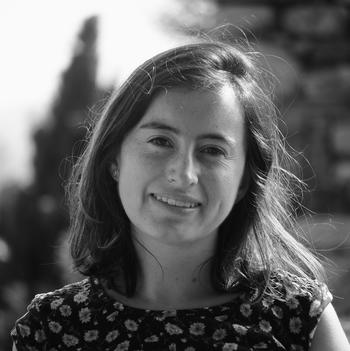M.Sc. Nathalia Paola Cerón Espejo

Department of Earth Sciences
Institute of Geological Sciences
Tectonics and Sedimentary Systems
PhD Candidate
Room B 245
12249 Berlin
I am a geologist interested in studying human-environment interactions through the reconstruction of the evolution of Quaternary landscapes. Human activity over time has modified natural landscapes on Earth, affected the aquatic, soil, and air geochemistry, and has left its signature on the geological record. Developing interdisciplinary research joining sedimentological, geochemical, and geomorphological approaches contributes to getting a better understanding of human activity effects on the dynamics of erosion and vegetation in historic occupied territories by human civilizations.
With a background in environmental geochemistry, sedimentology, and stratigraphy, I have investigated during my master’s studies the impact of millenary mining activity in the estuary area of the rivers Tinto and Odiel in south Spain. My current PhD project focuses on the influence of human past settlements on vegetation and erosion dynamics in the Western Mediterranean Region.
Education
| since 01/2022 |
PhD candidate - Tectonic and Sedimentary Systems Freie Universität Berlin, Germany |
|
05/2021 - 11/2021 |
Research Associate Universidad de Huelva, Spain |
| 2018 - 2020 |
Master of Science - Environmental Chemistry Universität Bayreuth, Germany |
|
10/2017 - 10/2018 |
Geologist Universidad Nacional de Colombia, Servicio Geológico Colombiano, Colombia |
|
2015 - 2017 |
Assistant Geologist Corporación Geoambiental Terrae, Colombia |
|
2011 - 2017 |
Bachelor Degree - Geology Universidad Nacional de Colombia, Sede Bogotá, Colombia |
Current research
The inter-institutional project SEDITION (Dynamics of eroSion and vEgetation in the Western MeDITerranean Region reconstructed by couplIng proxy data (cOsmogenic Nuclides, biomarkers)), supervised by Anne Bernhardt, Dirk Scherler, Alexander Rohrmann and Wiebke Bebermeier, has an interdisciplinary approach joining the "Sedimentary Systems", "Cosmogenic Nuclides" and "Physical Geography" research groups from the Institute of Geological Sciences.
My goal is to investigate the influence of human settlement history on vegetation and erosion in the immediate hinterland of selected sites in the Western Mediterranean with a significant archaeological background. The paleo vegetation and hydrological conditions of the sites will be studied by using terrestrial biomarkers as carbon and hydrogen isotopes ratios of leaf wax n-alkanes. These proxies will be combined with the quantification of erosion rates by analyzing two in situ cosmogenic nuclide systems: 10Be and 14C, with long and short half-lives,1.4 Ma and 5700 ± 30 years respectively. The fast decay in 14C indicates that its concentration will decrease fast as exposed surfaces are shielded from cosmic rays covered under deposited sediments. Therefore, when pairing short and long-lived nuclides, changes in surface erosion rates or events of mass removal during the Holocene and latest Pleistocene timescales, where human activity has occurred, can be detected. Geomorphological evidence will also be examined and modeling approaches will be applied.